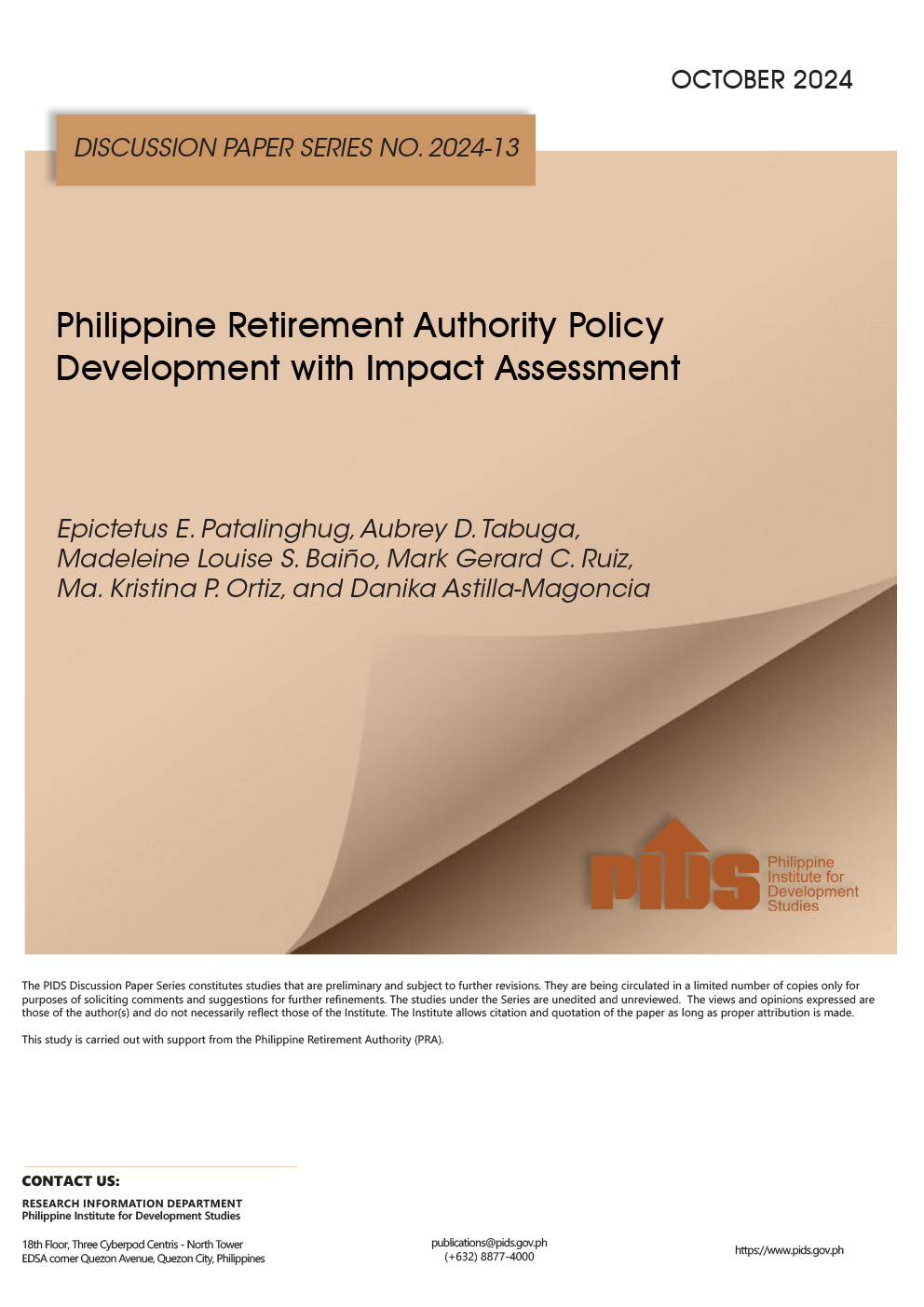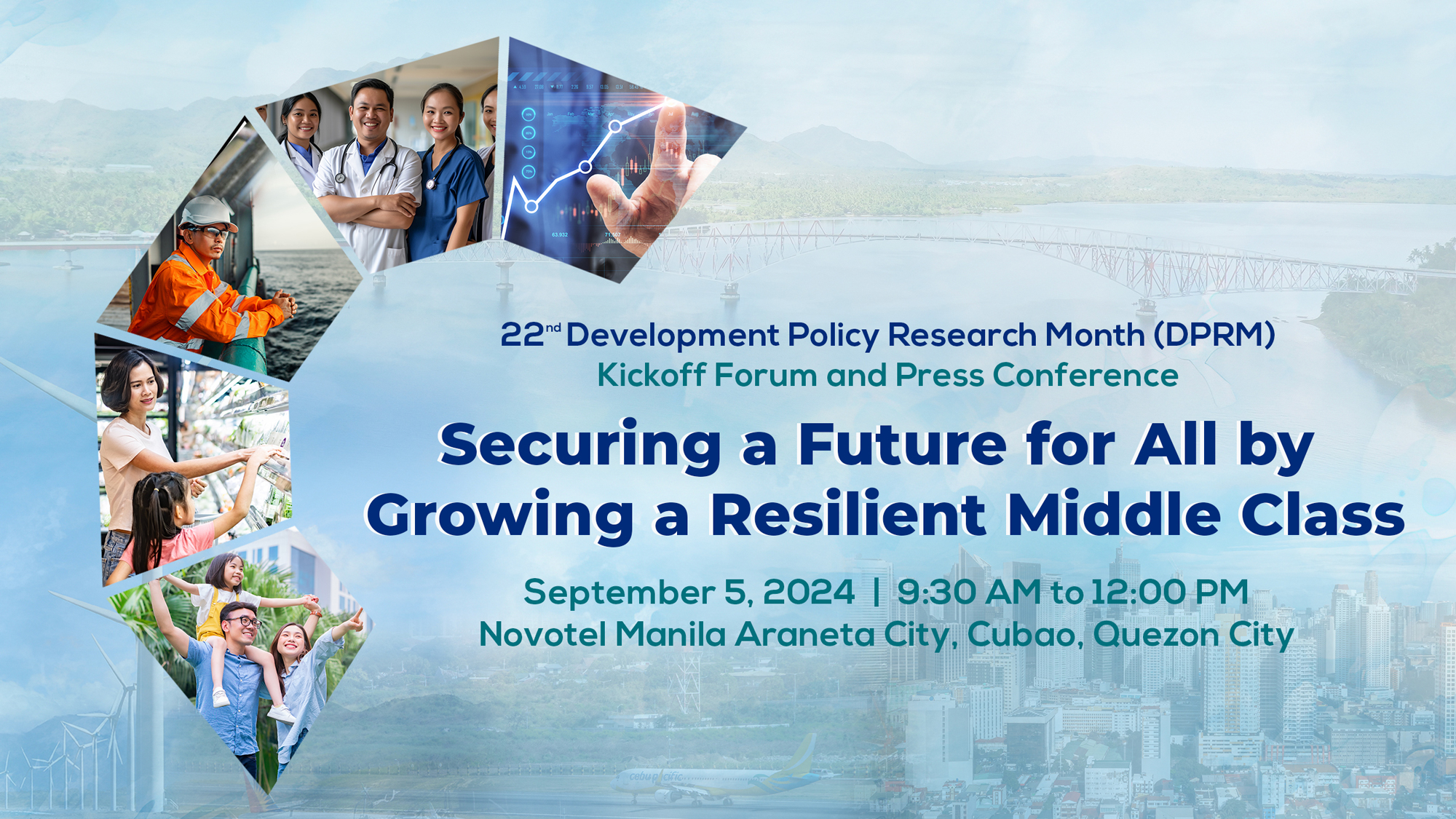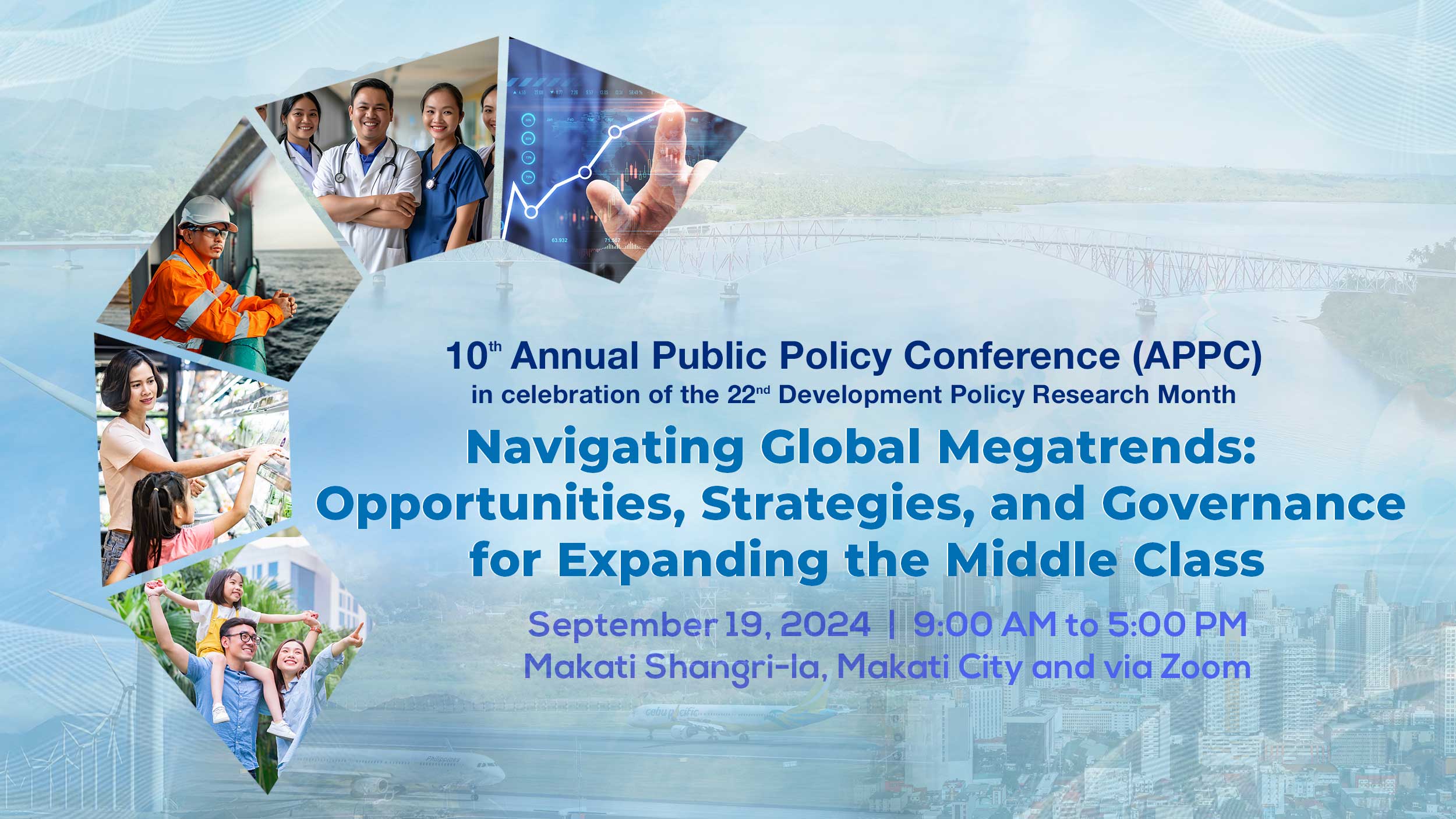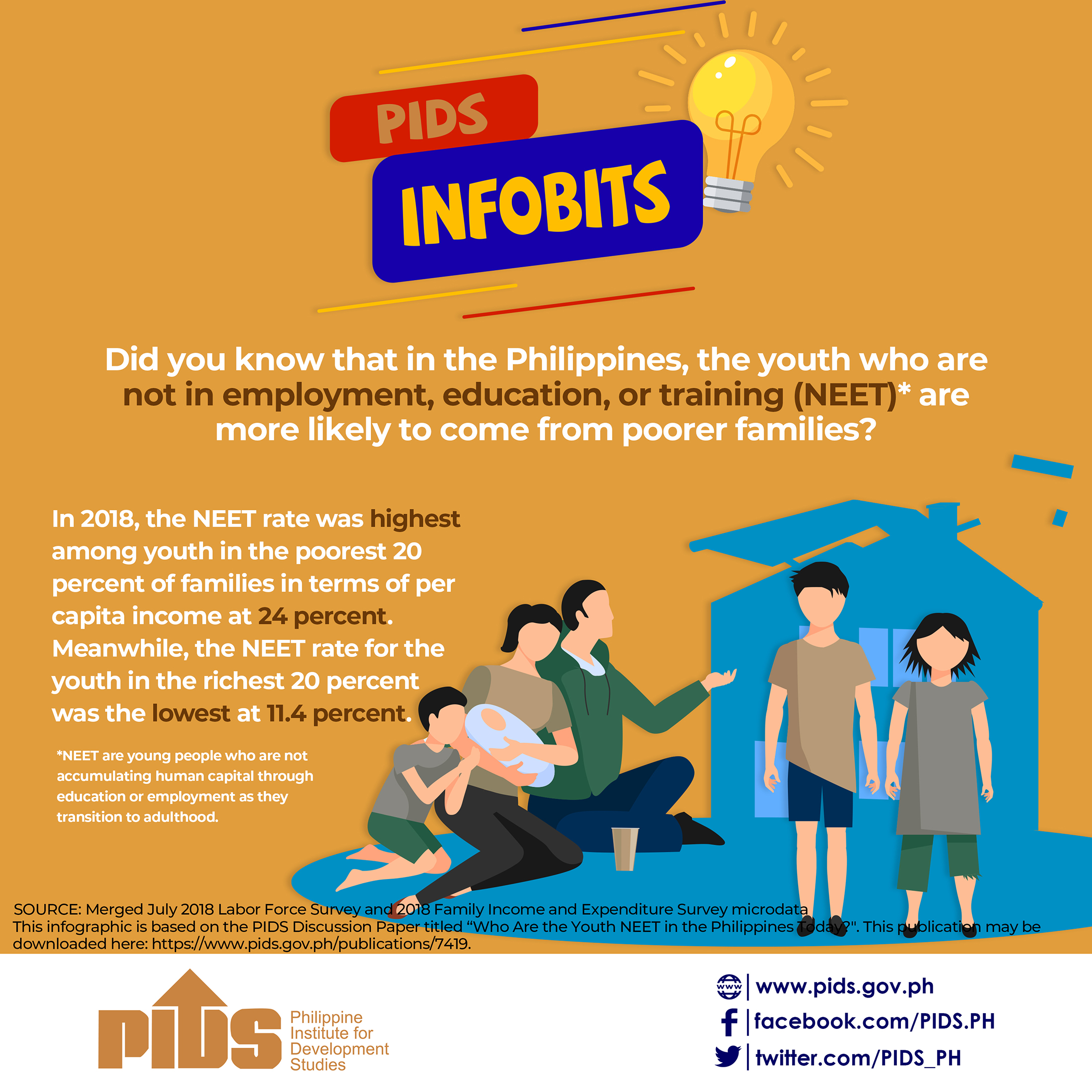The business press gave a great deal of importance to a recent news that the Philippine economy will soon achieve upper middle-income status in 2019. As reported by NEDA, under the World Bank standards, an upper middle-income country is that which has a Gross National Income (GNI) per capita of between $3,956 and $12,235. Examples today of these countries are Malaysia, South Africa, and China. High income countries are those with a GNI per capita of $12,236 or more, such as South Korea and Spain. We are still at the lower middle level with a GNI between $1,006 and $3,995. At the rate in which our GNI has been growing at about 4% annually, we will cross the $3,956 threshold by next year. If we are able to sustain at least a 6 to 7% GDP annual growth for the next twenty years, we will be a First World country by 2040. We must focus on the Build BuildBuild program at least for the next three Administrations. We must continue to invest in the quality of education at all levels eventually putting a great deal of focus on higher education. We must invest more and more in research and development. Those are all the requirements for reaching First World status as we can learn from the experiences of the Asian tiger economies of the last century, i.e. Singapore, Taiwan, Hong Kong and South Korea.
National averages, however, can be quite misleading. Even a per capita income of $20,000 as a national average may hide the fact that there may be households in the country that lie below the poverty threshold of $2 per person per day or whatever every nation considers as the minimum for human decency and comfort. It is well known that even one of the richest nations in the world today, the US, that has a per capita income of over $40,000 still has over 10% of its population living in dehumanizing poverty. That is why in the Philippines, there is a concerted effort of the Government, the business sector and civil society to bring down our poverty incidence of 21% of the population (again a national average, since some regions can have as much as 50% of their population below the poverty line) to single digit in the next twenty years. This task should be priority for all leaders in line with the principle of the preferential option for the poor.
We cannot forget, however, that that the strong foundation of any society is the middle-income households or the middle class. It is not easy to quantify the middle class. There have been several attempts to segment the Philippine population into low income, middle income and high income. A pioneering work was done by economists from the Philippine Institute of Development Studies (PIDS), a think tank affiliated with the National Economic Development Authority (NEDA) in 2015. In an article entitled “Why Inequality Matters in Poverty Reduction and Why the Middle Class Needs Policy Attention,” Jose Ramon G. Albert and Martin Joseph M. Raymundo attempted to identify several segments of Philippine households according to income levels. Using data from the Philippine Statistical Authority (PSA) Family Income and Expenditure Survey (FIES) 2012, they arrived at the following categories: Poor (per capita income less than the official poverty threshold which in peso terms is P7,890); Low income, but not poor (per capita incomes between the poverty line and twice the poverty line); Lower middle income (per capita incomes between twice to four times the poverty line); Middle income class (per capita incomes between four times to ten times the poverty line); Upper middle income (per capita incomes between ten to fifteen times the poverty line); Upper income, but not rich (per capita incomes between fifteen to twenty times the poverty line); and Rich (per capita incomes at least equal to twenty times the poverty line). The assumption is that the average Filipino household has five members (parents and three children). It is obvious that these classifications are quite arbitrary but can be the starting point for some analysis and policy recommendations.
Given these rough approximations of income categories, using 2012 data, they arrived at the following figures: The poor earn less than P7,890 monthly and number 4.2 million households; Low income earn between P7,890 to 15,780 monthly and number 7.1 million households; Lower middle income earn between P15,780 to 31,560 and number 5.8 million households; Middle income earn between P31,560 and 78,900 monthly and number 3.6 million households; Upper middle income earn between P78,900 and 118,350 and number 470,000 households; Upper income (but not rich) earn between P118,350 and 157,800 and number 170,00 households; and Rich earn at least P157,800 and number 150,000 households. In a subsequent article for Rappler dated July 8, 2015, Dr. Albert and Mr. Gaspar were joined by Martin Joseph Raymundo to further refine the answer to the question “Who are the middle class?” They reiterated that the middle class strictly so-called are those whose monthly family incomes in 2012 ranged from about four times the government’s official poverty line, i.e. about 30,000 pesos to ten times the poverty line or nearly 80,000 pesos. In 2012, there were an estimated 3.6 million households in this category. They pointed out that the middle class is an urban phenomenon with about two thirds of them residing in urban areas while the poor and low-income families are concentrated in rural areas (about 75 per cent of the poor are in the countryside). For more reasons, the high income and rich families are concentrated also in the urban areas, together with the lower middle, middle and upper middle households.
The biggest concentration of the middle class is in Luzon, especially in the National Capital Region (which has a fourth of them) and neighboring CALABARZON and Central Luzon. Looking forward, I foresee that there will be other metropolitan areas that will grow their middle class even faster than Metro Manila. These are Metro Pampanga (the so-called Pampanga triangle), Metro Cebu, Metro Iloilo, Metro Davao and Metro Cagayan de Oro. These are the growth centers that are expected to attract business and other activities away from Metro Manila as they are endowed with better infrastructures through the Build BuildBuild program of the Duterte Administration. As entrepreneurial activities intensify among the middle class, I also foresee the upper income (but not rich) and the rich classes to expand so that they will account for more than the 1.5 percent of households that they represent today.
In another paper prepared for PIDS (2015), the three authors cited above made a strong case for development policy to focus on how the middle class can play a critical role in the attainment of First World status for the Philippines, without relenting on the efforts to eradicate poverty. They cited a number of studies highlighting the role of the middle class in the development of other countries: “For instance, England’s economic progress is attributed to the ascendancy of ‘the great English middle class’ (Landes 1998). In Africa, the middle-income group has also contributed to the growth of the private sector. The middle class is not only expected to create employment as business start-ups but also to boost investments and production as consumers. They also have an impact on governance as they can demand for better public services and institutional improvements. Countries with a large middle class tend to grow faster (Easterly 2001). Moreover, according to Kharas (2011), the middle classes in emerging economies, particularly in Asia, will determine the future global demand growth. The 2010 Key Indicators for Asia and the Pacific of the ADB (2010) reports a significant increase in the size of the middle class in developing Asia. However, this report also warns that a big chunk of the middle class is in the lower portion of income distribution. This group may easily fall into poverty, and will deserve policy attention.” (To be continued).
For comments, my email address is bernardo.villegas@uap.asia.












